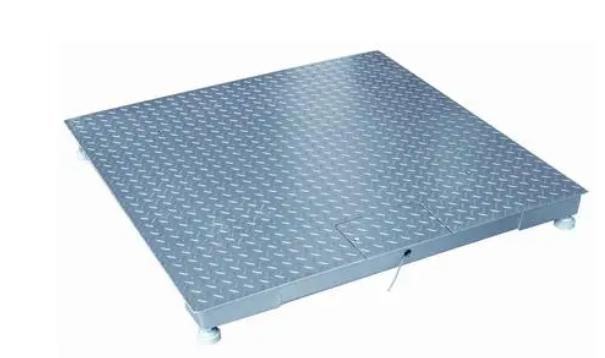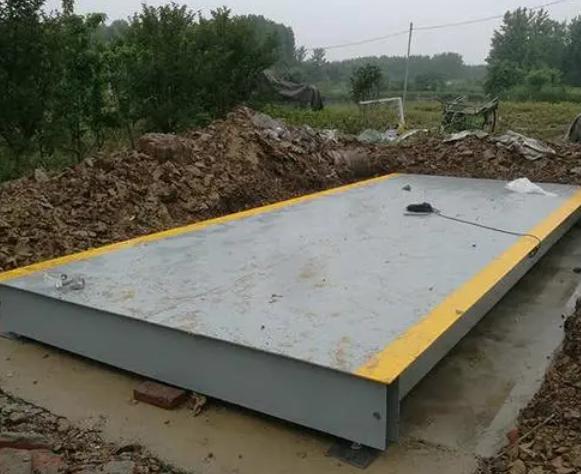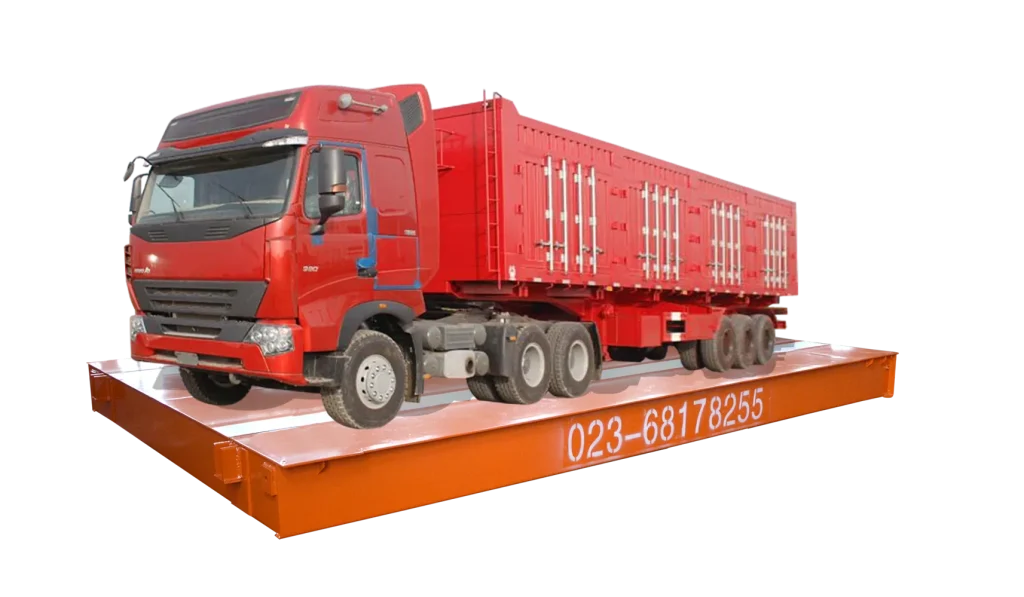Make Your Electronic Weighbridges Accurate
Electronic weighbridges are essential for ensuring fair trade practices and monitoring material usage in manufacturing. However, achieving consistent and reliable weight readings requires an understanding of the key factors influencing accuracy as well as the potential error sources that can jeopardize results. Discover these critical aspects, allowing you to make more informed decisions about your electronic weighbridge requirements. We’ll look at the fundamental components that contribute to accurate measurements, followed by a detailed analysis of common error sources in electronic weighbridges. Finally, we will discuss Bincen’s electronic weighbridges, which are specifically designed to provide exceptional accuracy and reliability.

Key Factors for Accuracy Control in Electronic Weighbridges
Factor 1: Sensor Performance
Sensors are the heart of electronic weighbridges, and their sensitivity, linearity range, stability, and anti-interference ability all have a direct impact on the weighbridge’s measurement accuracy. High-quality sensors should have high resolution, fast response times, and long-term stability.
- Sensitivity: The sensitivity of a sensor is its ability to detect and respond to changes in the measured quantity. A higher sensitivity sensor can detect smaller weight changes, improving the weighbridge’s accuracy.
- Linearity Range: The linearity range of a sensor is the set of input values for which the sensor output is proportional to the input. A wider linearity range enables the weighbridge to accurately measure a wider range of weights.
- Stability: A sensor’s stability refers to its ability to maintain consistent output over time, despite changing environmental conditions. A stable sensor will not drift or fluctuate in output, improving the weighbridge’s accuracy.
- Anti-interference Ability: A sensor’s anti-interference ability is its resistance to interference from external sources like electromagnetic fields or vibration. A sensor with good anti-interference capability is less likely to produce inaccurate readings due to external influences.
Factor 2: Signal Processing Technology
The raw signal output from the sensors is frequently accompanied by noise, so effective signal processing technology is critical for increasing measurement accuracy. This includes precise amplifier circuit design, effective digital filtering algorithms, and accurate data sampling frequency settings.
- Amplifier Circuit Design: The amplifier circuit amplifies the sensor’s weak signal to a level that can be processed by the weighbridge’s electronics. A precise amplifier circuit ensures that the signal is amplified without distortion or noise.
- Digital Filtering Algorithms: Digital filtering algorithms remove noise from signals. There are numerous types of digital filters available, and the filter used will be determined by the signal’s specific characteristics and the desired level of noise reduction.
- Data Sampling Frequency: The data sampling frequency refers to how frequently the weighbridge’s electronics sample signals from sensors. A higher sampling frequency allows the weighbridge to capture more data points, increasing measurement accuracy.
Factor 3: Environmental Adaptability
Electronic weighbridges are frequently installed outdoors and must withstand a variety of environmental conditions, including temperature changes, humidity fluctuations, and electromagnetic interference. As a result, the weighbridge’s design must account for these external conditions, as well as use appropriate materials and protective measures, to ensure that good measurement accuracy is maintained in a variety of environments.
- Temperature Changes: Temperature changes can impact electronic weighbridges by affecting sensor and electronic components. Temperature compensation measures should be incorporated into the weighbridge design to ensure that temperature changes do not affect measurement accuracy.
- Humidity Fluctuations: Humidity fluctuations can affect the accuracy of electronic weighbridges by causing moisture to condense on sensors and cause malfunctions. The weighbridge’s design should include moisture-resistant sensors, such as sealed enclosures or dehumidifiers.
- Electromagnetic Interference: Electromagnetic interference (EMI) can impact the accuracy of electronic weighbridges. EMI can originate from a variety of sources, including power lines, motors, and radio transmitters. The weighbridge design should include EMI shielding measures to protect the electronics from interference.

In-Depth Analysis of Error Sources in Electronic Weighbridges
Mechanical Structure Errors
The levelness, rigidity, and flatness of the weighbridge platform can all influence measurement results. If the platform is twisted, deformed, or uneven, the vehicle’s applied pressure will be unevenly distributed, resulting in errors.
- Levelness: If the weighbridge platform is not level, the vehicle’s weight will not be evenly distributed across the load cells, resulting in inaccurate measurements.
- Rigidity: If the weighbridge platform is not rigid, it may flex or deform under the vehicle’s weight, affecting load distribution and resulting in inaccurate readings.
- Flatness: Non-flat weighbridge platforms can lead to weight distribution errors due to high or low spots.
Sensor Errors
Measurement errors can be caused by manufacturing defects, aging, or sensor damage. For example, zero drift, nonlinear response, or an excessive temperature coefficient in the sensors can all have an impact on the measurement results.
- Zero drift: Zero drift is a phenomenon in which the sensor output changes over time, even when no load is applied. This can cause the weighbridge to show a non-zero weight even when no vehicle is on the platform.
- Nonlinear response: Nonlinear response occurs when sensor output does not match the applied load. This may cause the weighbridge to underestimate or overestimate the vehicle’s weight.
- Temperature coefficient: The temperature coefficient indicates how much the sensor output changes with temperature. A sensor with a high temperature coefficient will be more sensitive to temperature changes, potentially leading to inaccurate readings.
Electrical Interference Errors
Power fluctuations and electromagnetic radiation can both cause electrical interference in electronic weighbridges. This interference can disrupt the sensors’ normal operation, reducing measurement accuracy.
- Power fluctuations: Power fluctuations can cause voltage fluctuations in sensors, affecting their output. This can result in inaccurate readings, particularly if the power fluctuations are rapid or severe.
- Electromagnetic radiation (EMI): EMI can originate from various sources, including power lines, motors, and radio transmitters. EMI can cause the sensors to pick up noise, interfering with their ability to determine the weight of the vehicle.
Software Processing Errors
While most modern electronic weighbridges use digital processing technology, errors can still occur due to software algorithm optimization and calibration method accuracy. In addition, software bugs or operational errors can result in incorrect measurement results.
- Software algorithms: The software algorithms used to process sensor signals can have an impact on measurement accuracy. If the algorithms are not properly optimized, they may introduce noise or distortion into the signal, resulting in errors.
- Calibration methods: The method used to calibrate the weighbridge can have an impact on measurement accuracy. If the calibration is not done correctly, the weighbridge may produce incorrect results.
- Software bugs: Software bugs can cause the weighbridge software to malfunction, resulting in incorrect measurements.
- Operational errors: Operational errors, such as entering incorrect data or operating the weighbridge incorrectly, can also result in errors.
Human Operator Errors
The operator’s professional skills, experience, and operational standards can all have an impact on measurement results. Incorrect vehicle parking positions, overloading, and frequent impact loads can all cause measurement errors.
- Incorrect vehicle parking: If the vehicle is not properly parked on the weighbridge platform, the weight may be distributed unevenly across the load cells, resulting in inaccurate readings.
- Overloading: If the vehicle is overloaded, the weighbridge may be unable to accurately determine its weight. This is because the load cells may become overloaded, causing them to malfunction.
- Frequent impact loads: Frequent impact loads from vehicles with heavy springs can affect measurement accuracy. This is because impact loads can cause the weighbridge platform to vibrate, interfering with the load cells’ ability to detect weight.

Choose Electronic Weighbridges From Professional Suppliers for Accuracy
Professional electronic weighbridge suppliers products to provide high-precision weighing solutions. However, when it comes to a specific product or specially customized weighbridge, you may need to consult the detailed information they provide or contact them for more accurate information. As one of the famous weighbridge manufacturers in China, Bincen could be your reliable partner.





